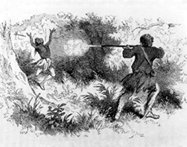Category Archive 'Cedarhurst'
11 Jul 2021
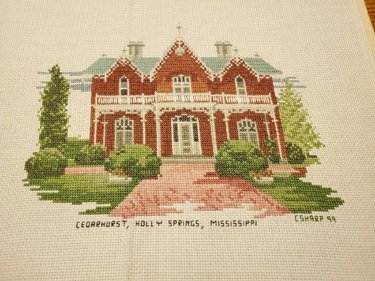
I found this completed needlepoint project, depicting “Cedarhurst,” our recently-acquired Deep South retirement house, on Ebay.
The same seller is offering another of these depicting “Walter Place.”
Holly Springs, despite being a small town of 7000 souls, has over sixty surviving Antebellum mansions, and evidently, back in the 1990s, some needlepoint firm was selling canvases featuring a number of its more notable houses.
I am naturally impressed with myself for owning a house that people portray in needlework.
16 May 2021


Sean Flynn, in LithHub, discusses the perfectly natural human need for some peafowl strutting about the property, perching in one’s trees, lending the desmesne a bit of exoticism and tone, and –of course– screaming their heads off.
My wife Louise had spontaneously volunteered to take a peacock from our friend Danielle because a peacock, in a fundamental sense, is not a bird that one possesses so much as experiences; as with an especially moving work of art, the simple act of looking at it will stir emotions. A peacock, she imagined, would patrol the yard like a sentry in dress uniform, high-stepping through the irises and roosting on the low branches of the cedars or the high peak of the barn. Every so often he would throw up a fabulous spray of feathers for no other reason than to remind us that such a spectacle is possible. It would be inevitable and yet somehow a surprise every time.
That is what one peacock would do, but only one.
Louise did not want Flannery O’Connor’s multitudes. She wanted a single peacock, a manageable number proportional to our small phony farm. The property was suitable for a pair of chickens, not a flock, after all, and the paddock was properly sized for a miniature horse, not a Thoroughbred. We were scaled for a solitary peacock, Louise insisted. Three was another matter altogether. A part-time job, she said. A petting zoo.
“You can’t have one peacock,” I told her on the drive home. “He’d be lonely.”
From: Why Peacocks? An Unlikely Search for Meaning in the World’s Most Magnificent Bird.
RTWT

“Cedarhurst,” our Southern future retirement home. Ten acres is surely enough to keep the peafowl happy.
02 Apr 2021
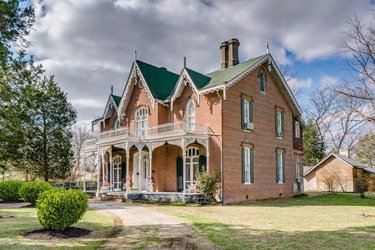
“Cedarhurst”.
A neighbor forwarded a newspaper item involving some of our new house’s Civil War history.
Grant occupied Holly Springs in late November or early December of 1862. He made the town his new supply base for the Siege of Vicksburg.
On December 18th, Confederate General Earl Van Dorn raided the Union base at Holly Springs with 3500 cavalry, capturing 1500 Union troops and burning Grant’s supplies.
Lacking supplies, Grant was compelled to retreat for a time, and Vicksburg remained uncaptured until the following July.
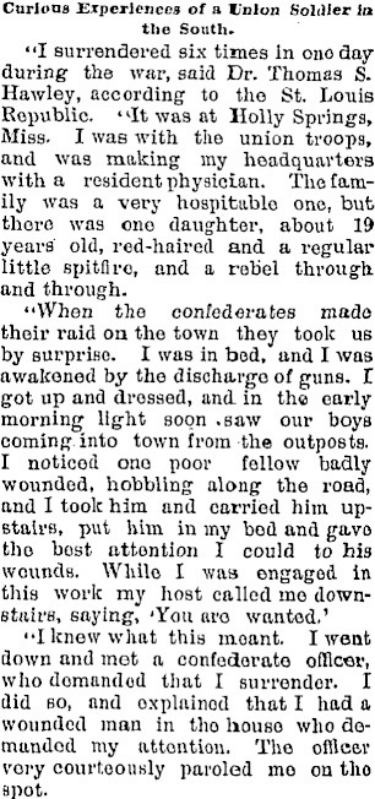
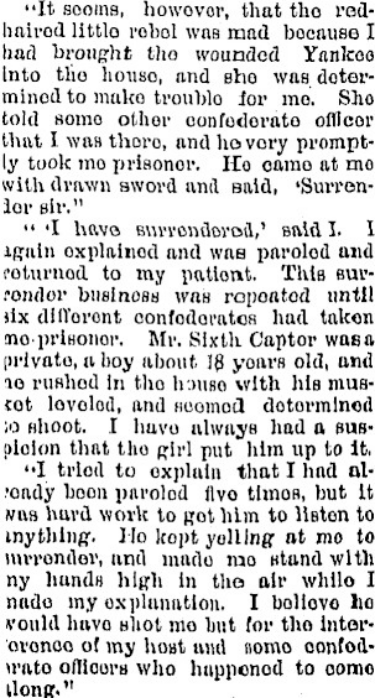
The fiery rebel was Catherine Sherwood Bonner, who later became secretary and muse to Henry Wadsworth Longfellow and a successful novelist and regional author in her own right.
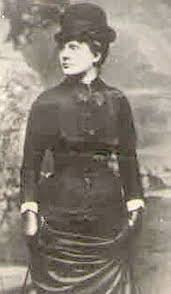
Many thanks to Bobby Mitchell!
31 Mar 2021


National Park Service Team
Our neighbor in Mississippi, Phillip Kyle Knecht yesterday posted on Facebook:
“For the last week, a team from the National Park Service’s National Center for Preservation Technology and Training has been in Holly Springs, documenting and scanning various extant slave quarters, slave cabins and tenant/sharecropper housing. The team used a really fancy 3D laser scanner, that will create 3D images of the exterior and interior of these structures. Eventually, they will be able to create “virtual reality” tours of these structures.
Thank you to the members of the team, Isabella Jones, Sreya Chakraborty, and Ina Sthapit, for coming to town and performing this invaluable service. Thank you also to Pam Zelman, with Preserve Marshall County and Holly Springs, Inc., who did much of the heavy lifting locally, arranging access to all of these sites. Thank you to the homeowners who graciously opened their doors to the team. I acted as a sort of local historical advisor at a few of their stops. Chelius Carter, with PMCHS, was instrumental in getting the team to town, and allowed the team to stay in the Hugh Craft House.
The team has a few more stops before they leave town on Friday, so if you see them around, welcome them to town! This is really important historical and preservation work.”
Our new home, Cedarhurst, has the old Antebellum kitchen and servants’ quarters in the backyard, remodeled in recent years with little architectural regard, alas! into an auxiliary apartment.
Karen contacted the Park Service team, and they are going to survey the Cedarhurst kitchen next!
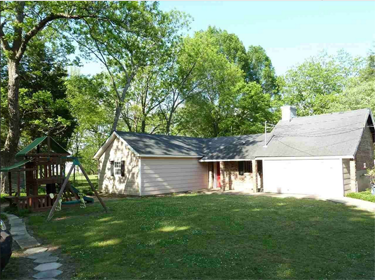
17 Feb 2021
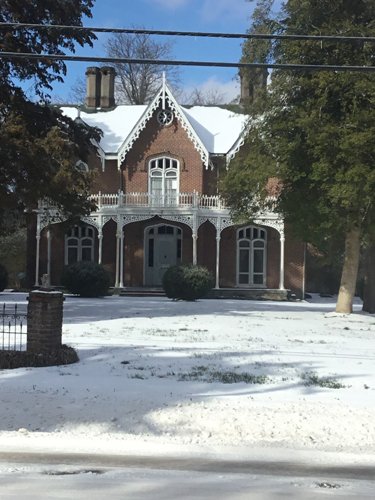
A neighbor was kind enough to forward a picture of our new house in Mississippi yesterday after the once-in-a-lifetime snowstorm.
13 Feb 2021

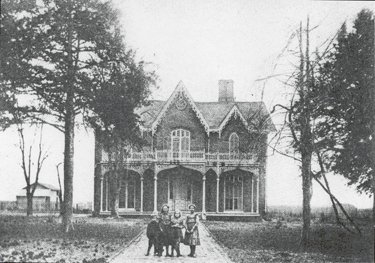
Very old photograph of Cedarhurst from Mrs. N.D. Deupree’s “Some Historic Homes of Mississippi,” from Publications of the Mississippi Historical Society, Vol. VII (1903).
Cedarhurst and Airliewood are both located on Salem Avenue and were constructed of brick in the late 1850s. The houses incorporate features promoted by A. J. Downing in his books concerned with appropriate architecture and landscaping for country houses. Downing considered the Tudor Gothic style ‘. . . to be the most convenient and comfortable, and decidedly most picturesque and striking style, for country residences of the superior class.”[Andrew J. Downing, A Treatise on the Theory and Practice of Landscape Gardening Adapted to North America with a View to the Improvement of Country Residences, C.M. Saxon & Company, New York,1857, pp. 400-401.] Evidently Gen. US Grant thought the houses were to be a superior class also because when he came to Holly Springs in 1862 he selected Airliewood for his headquarters, Cedarhurst for General Ord and Walter Place for Mrs. Grant.
Cedarhurst and Airliewood are picturesque, with their high-pitched roofs broken by decorative gables that are embellished with fanciful bargeboards and accented with finials and penants. The tall, paired, octagonal chimneys are considered a major part of the Gothic design and are sharp contrast to the simple chimneys of Greek revival houses.
The repetition of the pointed arch in the fenestrations underscores the fact that the houses are Gothic. The pointed arch is achieved in Cedarhurst by shaped bricks whereas labels or hoods emphasize the pointed arch on Airliewood. According to Downing “. . . the windows in the best Tudor mansions, affect a great variety of forms and sizes. . .” [Ibid., 398.] Both Cedarhurst and Airliewood meet this qualification as they have single, double, and bay windows. The front windows on the principal floor extend to the floor.
CEDARHURST
In addition to the Gothic features already mentioned, Cedarhurst is trimmed with octagonal colonettes, pointed-arch tracery, and a balustrade — all cast by the local antebellum industry — the Jones, McIlwaine, and Company foundry. The tall trees of holly, cedar and other varieties are in harmony with the vertical lines of the building.
Cedar Hearst was built for Dr. Charles Bonner, a Pennsylvanian of Irish descent who married Mary Wilson of Holly Springs. The house is frequently referred to as the home of Sherwood Bonner, the second child of the Charles Bonners, who became a writer of Southern dialect stories and secretary to the American poet Henry Wadsworth Longfellow.
Catherine Sherwood Bonner had strong feelings for her home place. She frequently referred to the house in her correspondence with Longfellow. [Jean Nosser Biglane, An Annotated and Indexed Edition of the Letters of Sherwood Bonner, M.A. thesis, Mississippi State University, 1972.] On October 31, 1877, she wrote from Holly Springs to Henry Wadsworth Longfellow in Cambridge, Mass.:
Did I ever tell you what a beautiful home mine was? The places not well-kept up now, but nothing can take away the grander of the old trees, or make the flowers less fragrant. The wide gallery in front is all overrun with Madeira vine; it is in full blossom now, and we sit on the porch every evening in the moonlight, talking of the past days that its aromatic sweetness, more than anything else seems to recall.
Sherwood Bonner returned to Holly Springs to care for her father and brother who died on September 9, 1878 during the yellow fever epidemic. In November, 1878, Ms. Bonner wrote to Longfellow concerning cleaning the house after the epidemic: “You know all the carpets have to be taken up, the rooms fumigated, the walls calcimined, and everything thoroughly aired. It is an immense undertaking.” In the same letter she wrote: “I do not know what I shall do. There is some talk of a division of property. I know that my father would wish that I should keep the house we love so well; yet I know I should be so unhappy here, shut in with sorrow; and it is so large house for my Aunty, Helena, and myself. I cannot bear to give it up; and yet I want a home in Boston. In December she wrote: “I had hoped to leave Holly Springs before Xmas; but I’m detained here by business matters. It breaks my heart afresh to be here at the time that has never failed of happiness, in the home that always threw open its hospitable doors to welcome Christmas guests.” On April 18, 1879: “We are all here together in the old home. Aunty has made up her mind that she cannot live away from it, so she will stay here for the present at least.”
By August 7, 1881, Sherwood Bonner was faced with the possibility of having to sell her home at a public auction if she did not pay her brother-in-law $1500 for her sister’s share of the house. She wrote to Mr. Longfellow:
It is cruel but he is determined — Of course it will be sold at an utter sacrifice — as things always are forced sale — and we must see this beautiful home go. For myself I would be reckless enough to make no effort to save it — but there is Aunty’s old age and Lillian’s future to be considered. All the cares of the world seemed to crowd upon me — and I am alone. My attorney strongly advises me to close with his offer — saying it is absolutely securing me at a small sums a very fine and valuable property — and that he can borrow the money for me for long term of years. But you can imagine how I shrink from incurring such a debt. I should have to mortgage my part of the plantation — and in the case of my death it would be sold. And this is where our only income comes from. The house is nothing but a white elephant. I have asked time to consider and I lay the matter before you, because I know you will help me to some extent. If I could pay them a certain part of the sum, I should be willing to borrow a smaller sum. I shall have three hundred dollars in a week or so, from the Lippincott’s — so there is a beginning. And I’m trying as well as I can, for the perturbation of my soul, to complete a Harper story, though not to fetch one hundred more — And you will help me, will you not to save my home — to secure for myself a retreat for my ruined life where I may die with dignity . . .
Mr. Longfellow wrote that he would send the money after the middle of the month. He died before fulfilling his promise; however, Miss Alice Longfellow, his daughter, sent the “generous gift” to Miss Bonner.
Sherwood Bonner died of cancer in Holly Springs on July 22, 1883. Her daughter Lillian sold the house around the turn of the century to Mr. W. A. Belk. Cedarhurst is now owned and occupied by Mrs. Fred M. Belk, Sr.
–Mary Wallace Crocker, Historic Architecture of Mississippi, University Press of Mississippi, Jackson, 1973, pp. 166-168.
Original article with photos.
12 Feb 2021

Cedarhurst
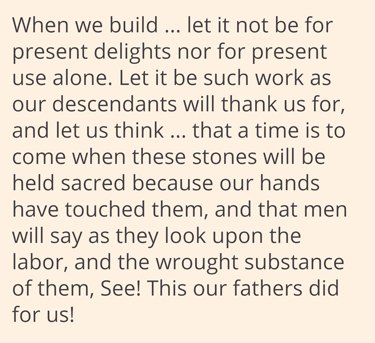
–John Ruskin.
05 Feb 2021

It’s called “Cedarhurst,” built 1857, in a small town in the Hill Country of Northern Mississippi. This region is the home country of William Faulkner and of the great Memphis sporting author Nash Buckingham.
The property has ten acres and is located near the territories of two fox hunts.
Read the rest of this entry »
Your are browsing
the Archives of Never Yet Melted in the 'Cedarhurst' Category.
/div>

Feeds
|













